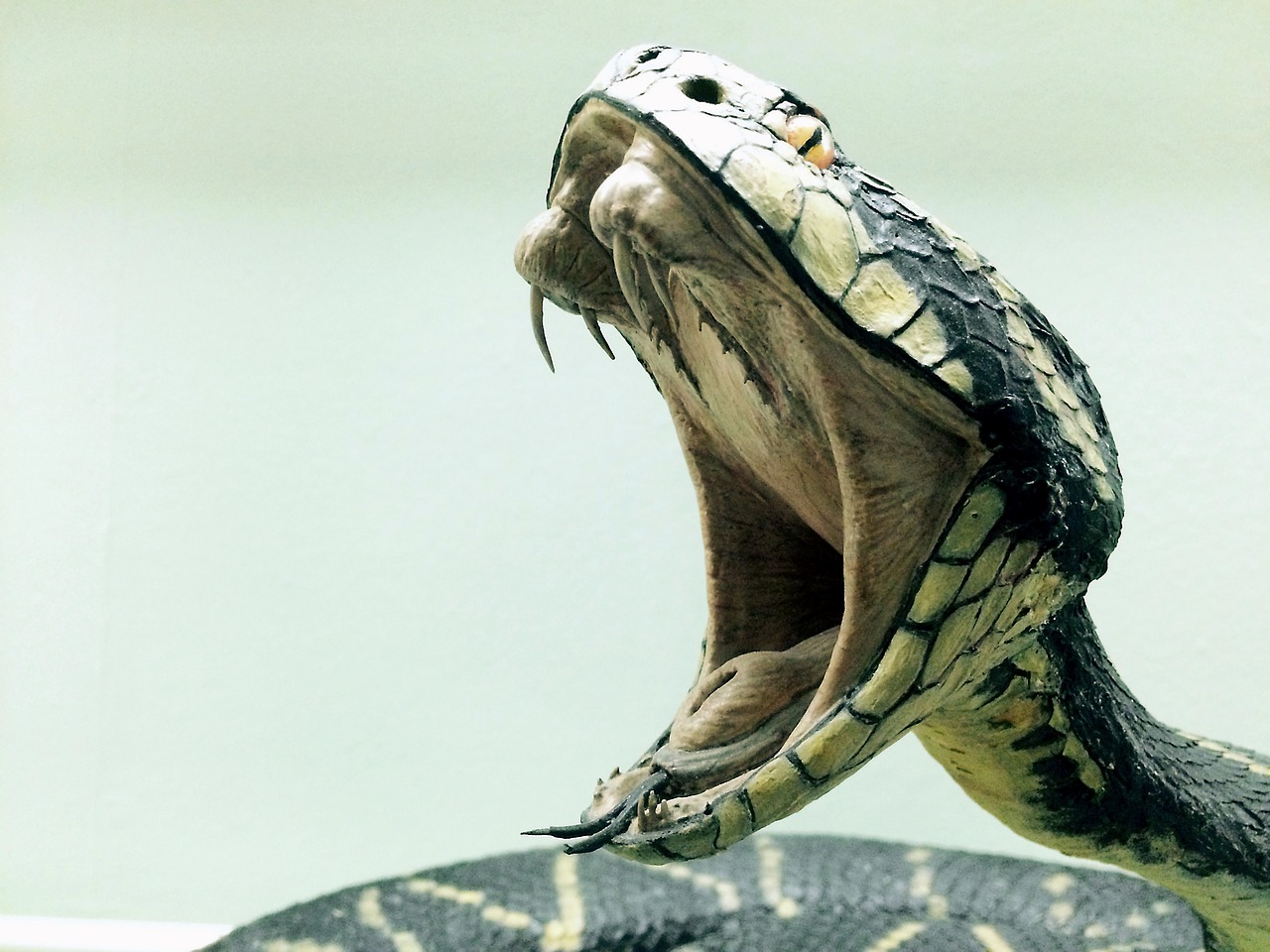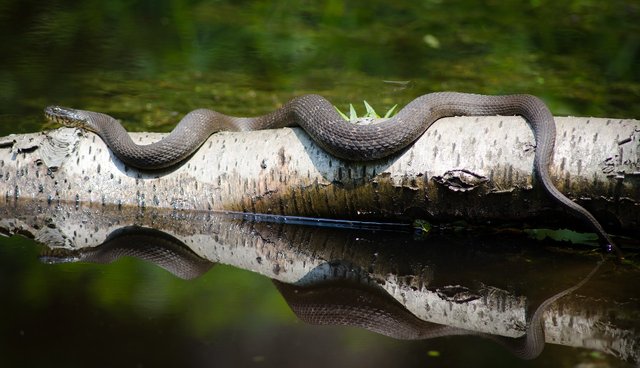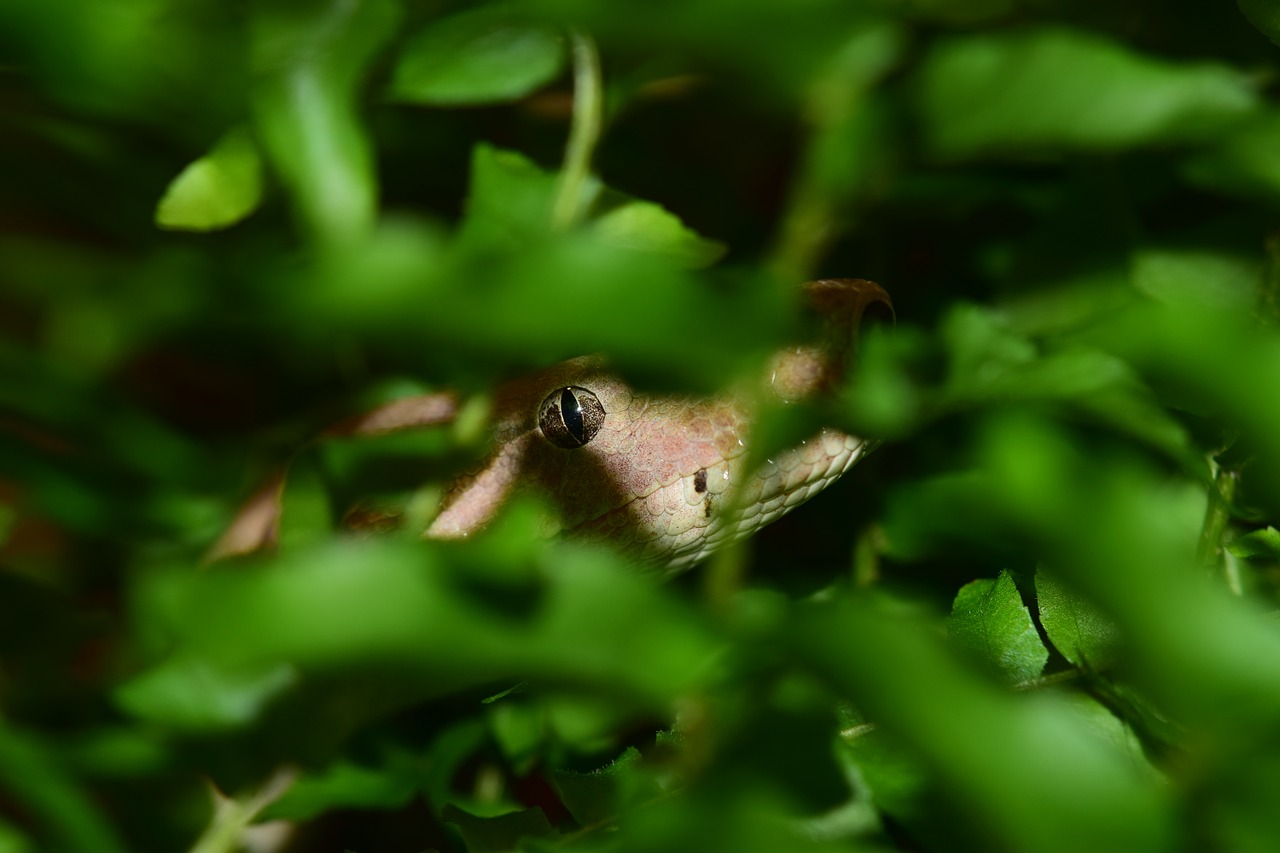Poisonous Snakes: Basic Knowledge and Precautions
If you fear serpents, it's probably because you're not familiar with them or have inaccurate information about them. Basically, there is no need to be afraid of snakes if you know a few things.

What you should know:
• About habits.
• How to identify the dangerous species.
• Precautions to prevent snakebite.
• What measures should be taken in the event of a snake bite.
Habits and precautions are the focus of this article. The identification of the relevant snake species depends on the whereabouts and can not be given here. About measures after a snakebite, I will report separately.
Basics
For example, those who wear shoes and trousers and live in camps have a greater risk of malaria, cholera, dysentery, or other diseases than a snake bite. In comparison, the risk of a snake bite is pretty low. Especially if you behave properly and prudently.
By the way: who wears solid shoes has also banned the main risk of scorpions.
Almost all snakes avoid humans, if they have the opportunity. A few species, such as the King Cobra of Southeast Asia, the Bushmaster, a few tropical rattlesnake from South America and ultimately the Mamba of Africa, could aggressively attack humans. But even these snakes only do it occasionally. Most snakes go out of your way and are rarely seen. This changes, however, if you force a snakes, irritates her or bothers her brood - which we will discuss later in the article again.

Occurrence of snakes
Of course, different species of snakes have different habitats. Nevertheless, one can say in general terms: where habitat forage offers to the snakes, there are also snakes.
If you think a bit further, the feed plants for the prey of the snake are a noteworthy factor when it comes to the possible population of snakes. Fruit, leftovers and water are therefore an attraction for snakes. Not because of the fruit, but because of the mostly abundant prey there.
(Old) dwellings, village environment, ruins, caves, rocky areas and garbage places provide snakes (and their prey) sufficient shelter.
Free areas tend to be shunned by most species of snakes when alternative areas with opportunities for shelter and hiding are given. High meadows, bushes, hedges, low scrub are a great habitat for snakes!
Areas without snakes
There are only a few areas of the earth in which there are no snakes. These are, on the one hand, the polar regions, due to their inhospitable temperatures. New Zealand, Cuba, Haiti, Jamaica, Puerto Rico, Ireland, Polynesia and Hawaii are also considered to be free of snakes.
Poisonous Snakes
There are no general and infallible rules for the safe identification of venomous snakes that could be used in the open field. Safe determination often requires close observation or examination of the snake body. Or just specialist knowledge of the occurring snake species.
Although there are no general identification features of poisonous snakes, it helps to know the snake species that occur in the area. Thus, a provision is quite possible in part. But the best strategy is and remains: leave all snakes alone.
Safety
First: few poisonous snakes are aggressive and all snakes prefer to flee if they have the opportunity, instead of hitting a human. But:
Snakes can be surprised or frightened, prevented from fleeing or you get too close to the nest. These are situations that you want to avoid. A serpent, too, is usually annoyed by that.
• Move with care and look for your footsteps and movements. Most snake bites result from kicking on or near a snake or handling snakes. Best of all, avoid contact with snakes and go a long way when you see one.
• If you have to cross fallen trees, you step on the trunk and not near or in front of it. Alternatively, avoid the trunk.

• Look carefully where your hands are going. They should never end in dark corners or caves, not under bushes or in other thickets. First let your eyes know where your hands are going.
• Just like steps and hand movements, one should also keep an eye on one when one sits down or lays down.
• When you get up and / or put on clothes, shake off your boots and clothes and inspect them. Hanging clothes and shoes, ideally in a sack, is even better.
• Use sticks to turn trunks and stones. Snakes (but also spiders and scorpions) like to hide under objects.
• Ideally wear gloves. Although gloves (unless they are puncture resistant) are not the most reliable defense against snakebites, they do help you with biting or hair-slipping spiders, as well as pinching and stabbing scorpions and pretty much against almost all crawling creatures. Continue in the scrub and against thorns.
In between: Gloves adapted to the purpose are in my opinion necessary to use the tool "hand" in the first place! Almost every situation away from the computer profits from (the right) gloves. Be it to improve the grip or as a mechanical protection: the right gloves for the right purpose in my opinion a must-have item. The right glove can increase the skills of the hand! And a broken hand is a broken tool. The hand, one of the most valuable tools ever!
• Do not oppress, annoy or force a snake. Snakes can not close their eyes. So you can not say if a snake is sleeping or sunning. Some snakes, such as mambas, cobras, or bush masters, aggressively attack when cornered or guarding a nest.
• Wear sturdy, high and as thick as possible footwear. In my opinion, tactical boots are more appropriate than pure leather boots. But you always have to see that in a direct comparison of the two shoes. My reason behind it:
Snakes inject or spray their poison automatically as soon as the fangs have pierced the first layer (in the case of nature that would be the skin). If this first / top garment or shoe layer has a distance to the skin, then that is advantageous. This is also a reason for more wide pants in the survival area. With my tactical boots, thanks to padding and several layers, I have probably a greater distance to the skin (but fit included), as I would probably have with a leather boot, which is not so heavily padded. Not to mention that a synthetic (quality) shoe can handle moisture better.
• Wear a long and loose pants. Even if the trend is unnecessarily narrow and "more fashionable" survival trousers: the width has its justification. Not only against snakes, because also the ventilation under the clothes profits from it. If you've done everything right, your pants (and long-sleeved shirt) will protect you from insects and spikes, too.
• At the latest during raids through the undergrowth you should wear shoes and pants and a lower leg protection. These gauntlets, which include the calf, put on another protective layer. Either this consists of somewhat further cut threads, solid materials such as plates or a combination of both.
• Stay calm when you encounter snakes. Snakes can not hear any audio - screaming does not bring anything. Yes, they could perceive the vibrations of the voice, but what the hell? Quick gesturing is more of a threat to the snake.
In between: Maby snakes do not like vibrations. Might be. However, I can not confirm that cows drive out snakes.
• Be extremely careful when killing a snake for food or safety reasons.
• Snakes actually do not look for humans as nocturnal cuddling partners. Despite this, sleeping bodies are sometimes attractive to snakes. If the snake is crawling over your neck at night, it will be remembered.
• Again, some (old) buildings, ruins and caves have a certain appeal. Here is not only protection from the elements, but also fodder. Consider this when you enter such areas. Especially if you plan to stay there longer.
The staff and stick, a valuable helper
At this point I want to go back to a valuable tool again separately: With a stick or stick can not only turn over branches and stones.
A stick or long, straight stick is a very easy to organize tool. It not only facilitates the ascent and sloping steep slopes. With a little practice, a staff has potential as a weapon - not only against snakes.
For survival purposes, a stick should be about your height, but at least up to the eyebrows and no larger than your own body height. At the same time, such a bar provides very good protection for the face and eyes when moving through bushes or thorns at night.
And while we're at Defense ...
Shotgun is the ammo of choice. Shotgun ammunition is not just for shotguns, but for almost every caliber and weapon type. It is common for this reason: to reduce vermin. The handling of shotgun ammunition, like everything else, should be practiced in order to know the abilities and limitations of this type of ammunition. But a machete works, too. Don't kill animals or anything, if you don't have to!
Well, and then it's dead ...
Killed? God bless her! In spite of that, she'll fool around for a while, squirm and whatever. These are just the last impulses of the nervous system. An actually dead snake could bite and poison several minutes later. Therefore, if the snake was killed (ideally cutted 15 cm behind the head), let it rest for a moment. Remember, the poison is still potent and dangerous! Here in Paraguay several people died (allegedly, so the story), because they put on boots, in which even snake teeth stuck and stung. Urban legend? What do you think?
Nice infos bro! Can save lifes!
Seems realy worthy for @originalworks and @steem-untalented!
The @OriginalWorks bot has determined this post by @survivalparaguay to be original material and upvoted it!
To call @OriginalWorks, simply reply to any post with @originalworks or !originalworks in your message!
This post has received a 0.78 % upvote from @drotto thanks to: @peppermint24.
More worth then my vote - thx for this article @survivalparaguay
@survivalparaguay CONGRATULATIONS YOUR PUBLICATION HAS BEEN SHARED BY @Untapentuoreja, will be seen by 2240 steemians